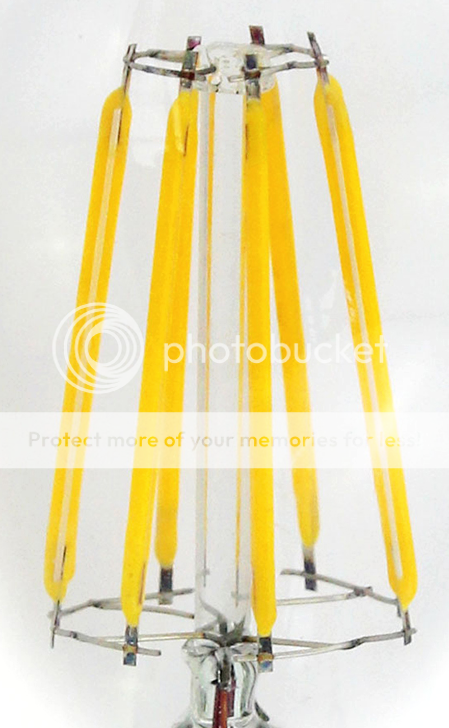JohnR66,
I have not bought the lamp in question, but I have bought in the past from the said vendors. I happen to work in energy conservation, and like you, have seen many LED bulbs, traffic signals, street lights (cobraheads, shoeboxes etc.) fail. Where were the parts sourced from? China. Why? Greed, pure and simple. There are superior products from the US, and the EU, that blow away the far east crap.
SemiMan,
Do you work in the industry, or is this a hobby? Why are you so defensive? Something to hide? You've been to the automotive board and heard about the less than stellar products that come from over there. If you think the LED filament bulb is so great, link up more information and try to change my mind instead of saying people who don't agree with you are stupid.
I work in the transportation industry now. I used to work in the semiconductor industries in the USA, Korea and China. Currently I have a side business engineering and manufacturing custom PCBs, power trays, harnesses, etc. A while back I was at the maintenance depot of our European made street car system. They had the motor drivers on a bench. These are made in Germany. I popped a cover on one, look at the PCB components and I immediately recognized a relay I have used many times before on interlock PCBs. I was floored to see that the Omron relay was made in Germany! The only kind I have been able to source are Omron from China. Same exact relay. I started looking around the driver assembly and realized that I couldn't find any parts made in China. Mostly European, Korean and a few USA and Japan components. It was pretty obvious that the manufacturer of these drivers took reliability seriously. Surprising me was the fact that you can still find stuff that's not "Made in China", WOW!
Not at all defensive and do work in the industry.
I will speak out against ignorant comments. For one a reminder that most Philips bulbs are made in China ... Yet a comment made that because Cree and Philips have not done this that it can't be good. That is a foolish comment.
5mm LEDs fail mainly due to the epoxy phosphor interface causing the epoxy to yellow and haze, not failure of the underlying blue die. A lot of others fail due to overdriving.
Remember when people used to make fun of Made in Japan?
No one has even tried to do a thermal analysis. LEDs in silicone at 100c (or higher) can last a long time and at 100c+ radiative loss is not insubstantial and you have the full cylinder for surface area.
FYI , no ripple is easy when power factor is not a concern.
Many people get all excited about flashy new products and tech, most of which comes from China. They want to believe the hype and buy into it. But soon they end up with a pile of junk at home, in the office, etc. All this Chinese made stuff that fizzled out because it was made cheaply. But fortunately for the Chinese, we westerners are easily distracted with our collective consumeristic ADD. We're being conditioned to accept junk. I think both of you know that the reason behind the bad rap Made in China gets is complicated, and not as simple as where it is made. Some manufacturers do have good success with factories in China. Most don't, IMO.
Semiman, China is NOT Japan. Officially, China is our adversary. Japan is an ally. China has vast, nearly endless cheap labor, and can decimate western industry for many more decades than Japan could have. I loath when people say "we used to say the same about Japan". But, whatever, I'm stuck riding this sinking ship down with everyone else.
OTOH, I do really like these light bulbs. If they could make a dimmable version, that'd be great.




